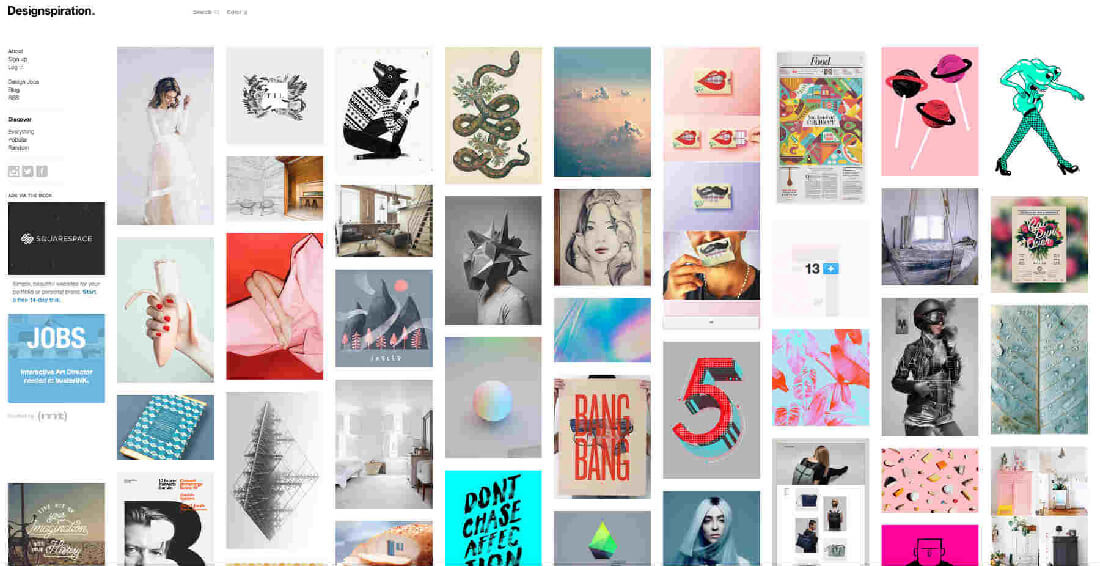
While putting your website online is an important step, it's not the end. It is important to keep your website updated and maintained. It is important to do market research and have a solid marketing strategy. You also need to hire competent website development professionals. It is now easier to set up a website.
Having the right tools can make the process go faster and cheaper. This is true for novice or professional web designers. A site builder tool will help you save time when building your website. WordPress is the best of all available tools. It is flexible in layout options and designed to work with any website. It is a great platform both for professionals and beginners.

WordPress can be customized easily and can host websites of almost any size. A site built on the platform can be repurposed into a different format at a later date, thereby saving you the hassle of moving it to another host. You can also use plugins to enhance the functionality of your WordPress website.
It's no secret that consumers and businesses are increasingly using mobile devices to access the web. You can ensure your website works well on mobile devices by making sure it is responsive and cross-browser friendly. This is particularly important if you plan to market your site via mobile. A favicon is a small icon that you can add to your website's homepage. Divi, a WordPress theme that allows you to create favicons, is available. You will need to log in to WordPress and navigate to the Theme Customizer to create your custom favicon. Once you have created your favicon, you can upload it and add it to the website.
A good host is another important thing to have when you launch a website. You'll want to choose a host that can keep track of your website's growth. It is also important to make sure that your host is able to handle any changes you make. If you're planning on making any major updates to your site, you may want to choose a hosting provider that can accommodate a large number of changes at the same time.
Google Analytics has more information than most people would need. This service is free and you can track the progress of your site. Google Analytics tracking code can be installed to make sure data goes exactly where you want. This can be the best way to find out what your website visitors are most interested in, and which features are proving to be most popular.

GDD (Google Data Model), a great approach to delivering your product faster than traditional design techniques. It's easy to ensure you don’t miss any vital steps in your development process by following pre-planned checklists.
FAQ
What is a "static website"?
A static website can be hosted anywhere, including GitHub Pages, Amazon S3, Google Cloud Storage, Windows Azure Blob storage, Rackspace Cloud Files, Dreamhost, Media Temple, and others. You can also deploy a static website to any platform that supports PHP such as WordPress, Drupal Joomla! Magento PrestaShop and others.
Static web pages are usually easier to maintain because they're not constantly sending requests back and forth between servers. Also, they load faster because there's no need to send any requests back and forth between servers. For these reasons, static web pages are often better for smaller companies that don't have the time or resources to manage a website properly.
What technical skills do I need to design and construct my site?
No. You just need to be familiar with HTML and CSS. You can easily find tutorials online that teach both HTML and CSS.
What HTML and CSS are available to help me build my website?
Yes! You should be able to create a website if you have been following the instructions.
You now know how to build a website structure. Now you need to learn HTML and CSS coding.
HTML stands as HyperText Markup Language. It is similar to writing a recipe. It would list the ingredients, directions, and how to do it. HTML also tells a computer what parts of text should be bolded, underlined or italicized. It's the language that documents use.
CSS stands for Cascading Style Sheets. It's like a stylesheet for recipes. Instead of listing each ingredient and instructing, you can write down general guidelines for font sizes, colors and spacing.
HTML tells the browser what HTML is and CSS tells it how.
You don't have to be a prodigy if you don’t get the terms. Follow these tutorials to create beautiful websites.
What Kinds Of Websites Should I Make?
This question is dependent on your goals. It may be best to sell online your products to build a company around your website. To do this, you will need to create a strong eCommerce website.
Other popular types of websites include blogs, portfolios, and forums. Each one requires different skills and tools. To set up a blog for instance, you'll need to learn about blogging platforms like Blogger and WordPress.
When you choose a platform, you will also need to figure out how to customize the look of your site. There are many templates and themes that are free for each platform.
Once you have decided on a platform, you are able to start building your website by adding content. Images, videos, text, and other media can all be added to your pages.
You can publish your website online once you have launched it. Your site is now available for visitors to view in their browsers.
Statistics
- Is your web design optimized for mobile? Over 50% of internet users browse websites using a mobile device. (wix.com)
- At this point, it's important to note that just because a web trend is current, it doesn't mean it's necessarily right for you.48% of people cite design as the most important factor of a website, (websitebuilderexpert.com)
- Did you know videos can boost organic search traffic to your website by 157%? (wix.com)
- It's estimated that in 2022, over 2.14 billion people will purchase goods and services online. (wix.com)
- The average website user will read about 20% of the text on any given page, so it's crucial to entice them with an appropriate vibe. (websitebuilderexpert.com)
External Links
How To
How can I get started as a UI designer?
There are two routes to becoming a UI Designer:
-
You can earn a degree in UI Design by going to school.
-
You can also start your own business.
If you want to go through school, you'll need to attend college or university and complete four years of study. This covers art, business, psychology, and computer science.
There are also state universities and community colleges that offer classes. Some schools offer free programs, while others charge tuition fees.
After you graduate, you must find work. You must establish a client base if you want to work for yourself. It is essential to establish a professional network so other professionals know you exist.
Opportunities to intern in web development companies are available. Many companies employ interns to gain practical experience before hiring full time employees.
A portfolio will help you get more work once you have established it. You should have work samples and information about the projects you worked on in your portfolio.
It is a smart idea to send potential employers your portfolio via email.
Being a freelancer means you need to market yourself. Advertise your services on job boards such as Indeed, Guru, Guru, and Upwork.
Freelancers frequently receive assignments from recruiters who post jobs online. These recruiters look for qualified candidates to fill specific positions.
These recruiters will typically give the candidate a project brief that outlines the position's requirements.
You are not required to sign long-term contracts as a freelancer. You should negotiate an upfront payment if your goal is to move forward.
Many designers prefer working directly with clients, rather than through agencies. Although this might seem like a great idea, many people lack the necessary skills.
Agency workers are often well-versed in the industry they work in. They can also access specialized training and resources that will allow them to produce top-quality work.
Agency workers also receive higher hourly rates.
Working with an agency has the downside of not being able to contact your employer directly.
A UI designer must be self-motivated, creative and flexible.
You must also possess excellent verbal and written communication skills.
UI designers are responsible in designing websites through the creation of user interfaces (UI), as well visual elements.
They are also responsible for ensuring that the site meets the needs of its users.
This requires understanding what information visitors want and how the website should function.
Wireframes are created by UI designers using a variety of tools. Before beginning to design, they use wireframing.
There are many wireframe templates available online. Anyone can create their own wireframes.
Some designers are solely focused on UI design while others blend UI design and graphic design.
Photoshop is a tool used by graphic artists to edit images.
They then use Adobe InDesign to lay out pages and layouts.
Photographers capture images using digital cameras or DSLRs.
The photos are then uploaded into a photo editing program. Here they can add captions, filters, or other effects.
The photographer saves the image as a compatible file format for the website.
It is vital to consider all aspects in the web design process.
This includes research as well planning, wireframing. prototyping. testing. coding. content creation. and publishing.
Research - It's essential to conduct thorough research before starting a new project.
Planning - After you have completed your research, it's time to start creating a plan.
Wireframing – A wireframe is a preliminary sketch or drawing of a webpage or application.
Prototyping - Prototypes help ensure that the final product matches the initial vision.
Testing - Multiple rounds of testing should be done on the prototype to make sure it works properly.
Coding: Coding is the process of writing code for computers.
Content Creation – Content creation includes everything, from the writing of copy to managing social networks accounts.
Publishing means uploading files onto a server and making the site accessible.
You'll need to be able to understand the different projects you work on as a freelance UX/UI Designer.
Some companies, for example, only need wire frames. Others require complete prototypes.
Depending on the type of project you accept, you may be asked to complete specific tasks.
For instance, if your job is to create wireframes you might have to make several over the course of time.
If you're required to build a complete prototype of a website, you may also be required to design a fully functional version.
It doesn't really matter what project you're working on, good interpersonal skills are vital.
You need to build strong relationships with potential employers as freelancers are hired primarily through referrals.
A communication skill is essential, both verbally or in writing.
A portfolio is an important tool in any freelancer's arsenal.
It is a showcase of your work and a demonstration of your ability produce high-quality outputs.
This is possible by creating an online portfolio.
You can find similar websites to yours online to help you get started.
You can then search these websites to find out which one offers its services.
Once you have determined the best practices for you, you can begin to adopt them.
You can also include links to your portfolio in your resume.